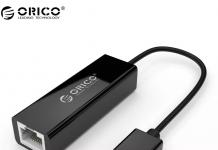The light sensor is the "eye" of your security camera. It captures the light that enters the lens of a security camera and converts it into an electronic signal.
The format, or size, of the sensor determines the coverage of your security cameras. The most popular sizes are the following: 2/3", 1/2" and 1/3".
- The 2/3" matrix allows video surveillance over long distances in very low light conditions.
- A matrix with a diagonal of 1/2 "- in most cases, is the best solution with acceptable light sensitivity.
- The 1/3" sensor provides good performance in low light and high frame rates.
The most popular types of matrices in terms of technology used are CMOS (CMOS) and CCD (CCD).
1. CMOS Surveillance Cameras: Pros and Cons
CMOS stands for Complementary Metal Oxide Semiconductor. The CMOS sensor uses progressive scan technology.
Advantages and disadvantages of a surveillance camera with a CMOS matrix
Benefits of a CMOS Surveillance Camera
- A high resolution
- Excellent color reproduction
- High frame rate
- Low power consumption
- Economic efficiency
Disadvantages of a surveillance camera with a CMOS matrix
- High noise level
- Moderate photosensitivity
2. CCD surveillance cameras: pros and cons
The abbreviation CCD stands for Charge Coupled Device. CCD surveillance cameras have excellent WDR (wide dynamic range), so they are often used in low light conditions. Security cameras with CCD sensors are generally less affected by vibration than security cameras with CMOS sensors.
Strengths and weaknesses of a CCD surveillance camera
Strengths of CCD Surveillance Camera
- Good performance in low light conditions
- Good WDR technology
- Less susceptible to vibration effect
- Low noise
- High sensitivity
- A high resolution
Disadvantages of a surveillance camera with a CCD matrix
- High power consumption
- Low frame rate
- high cost
CMOS or CCD - which is better?
Round 1: Frame rate and power consumption
The security camera with CMOS sensor is the clear winner in terms of frame rate. The security camera with CMOS sensor can directly convert the photoelectric signal into a digital signal. The frame rate and signal conversion speed of a CMOS sensor is much faster compared to a CCD sensor.
The analog-to-digital conversion takes place outside of the CCD sensors, so imaging and video take longer. In addition, security cameras with CCD image sensors often suffer from the problem of overheating.
CCTV cameras with CMOS sensors support much higher frame rates and consume less power, as well as being more economical than security cameras with CCD sensors. Generally, the price of a CMOS CCTV camera is more favorable than the price of a CCD security camera.
Therefore, the winner of the first round is a video camera with a CMOS matrix!
Round 2: Image Quality
Typically, CCD security cameras produce images with more than . However, advances in technology may bring CMOS image quality on par with CCD. For example, security cameras with CMOS sensors and optical zoom can produce even sharper images than CCD cameras.
So, the second round is a draw!
Round 3: Light sensitivity and noise
Traditionally, CCD sensors are less prone to image distortion and have higher light sensitivity, so they create much less noise than security cameras with CMOS sensors. However, nowadays, in terms of sensitivity, CCTV cameras with CMOS sensors are sometimes even superior to CCD cameras.
It's hard to say who will win in the light sensitivity and noise categories. However, based on the current state of technology and performance, CCD camcorders are the winners in the third round (perhaps a temporary win).
Based on the information above and a detailed comparison of the two sensor types, it can be found that each type of sensor has its pros and cons.
There can be no single winner in this battle. It all comes down to a specific case:
1. You can choose security cameras with CCD sensors if you will be using them in low light conditions.
Note: Some CMOS security cameras can also provide excellent surveillance at night.
2. Surveillance cameras with CMOS sensors can be more compact because the size of the CMOS sensors themselves can be very small. Therefore, you can choose them if you do not want to draw attention to yours.
3. Choose CMOS security cameras if your Internet connection is not good enough. CMOS surveillance cameras have less bandwidth requirements, so they won't overload your network.
Source reolink.com. The article was translated bysite administratorElena Ponomarenko.
The matrix is the basis of any photo or video device. It determines the quality and size of the resulting image. To date, two different technological principles are used in the manufacture of matrices - CCD and CMOS. Very often you can hear the question: “Which matrix to choose: CCD or CMOS?” Among lovers of photo and video equipment, there are heated debates about this. In this article, we will review these two types and try to figure out which matrix is better - CCD or CMOS.
general information
The matrices are designed to digitize the parameters of light rays on their surface. It is not possible to talk about a clear advantage of one of the technologies. You can make comparisons on specific parameters and identify the leader in one aspect or another. As for the preferences of users, the main criterion for them is often the cost of the product, even if it is inferior in quality or technical characteristics to its competitor.
So, let's see what both types of devices are. CCD-matrix is a microcircuit, which consists of light-sensitive photodiodes; it is based on silicon. The peculiarity of its work lies in the principle of operation of a charge-coupled device. A CMOS-matrix is a device created on the basis of semiconductor devices having an insulated gate with channels of various conductivity.

Principle of operation
Let's move on to identifying the differences that will help you make your choice: which is better - a CMOS or CCD matrix? The main difference between these two technologies is how they work. CCD devices convert the charge from the pixels into an electrical potential, which is amplified outside the photosensitive sensors. The result is an analog image. After that, the entire picture is digitized in the ADC. That is, the device consists of two parts - the matrix itself and the converter. CMOS technology is characterized by the fact that it digitizes each pixel individually. The output is a ready-made digital image. That is, the electric charge in the matrix pixel accumulates in the capacitor, from which the electric potential is removed. It is transmitted to an analog amplifier (built directly into the pixel), after which it is digitized in the converter.

What to choose: CCD or CMOS?
One of the important parameters that determine the choice between these technologies is the number of matrix amplifiers. CMOS devices have a larger number of these devices (at each point), so the image quality is slightly reduced during the signal transmission. Therefore, CCD matrices are used to create images with a high degree of detail, for example, for medical, research, and industrial purposes. But CMOS technologies are mainly used in household appliances: webcams, smartphones, tablets, laptops, etc.
The next parameter that determines which type is better - CCD or CMOS - is the density of photodiodes. The higher it is, the fewer photons will “go to waste”, respectively, the image will be better. In this parameter, CCD matrices outperform their competitors, as they offer a layout that does not have such gaps, while CMOS has them (there are transistors in them).
Nevertheless, when the user is faced with a choice: which one - CMOS or CCD - to purchase, the main parameter pops up - the price of the device. CCD-technology is much more expensive than its competitor and energy-intensive. Therefore, it is impractical to install them where a medium-quality image is sufficient.
2016-11-28 15:10:42 0 1493
Which sensor is better CMOS or CCD?
In recent years, CCD (charge-coupled device, CCD - charge feedback device) and CMOS (complementary metal-oxide-semiconductor, CMOS complementary logic on metal-oxide-semiconductor transistors) matrices continue to struggle with each other. Each has its pros and cons, and we will now look at them.
CCD and CMOS matrices are constantly subjected to various tests in order to find out who is the best.
First, let's look at a diagram of how these matrices look.

Advantages and disadvantages of CMOS matrices
One of the main reasons for the widespread use of CMOS matrices is the low cost of production, and low power consumption, as well as high speed.
CMOS sensors have the ability to randomly read cells, while a CCD matrix reads all cells at once.
Due to this method of reading, CMOS (CMOS) matrices do not have the so-called "smearing" effect (from the English smearing - smearing), which is inherent in CCD matrices and manifests itself in the frame in the form of vertical "pillars of light" from point bright objects, for example , sun, lanterns.
Despite the advantages, CMOS technology also has its drawbacks. The photosensitive element is extremely small relative to the pixel area. The lion's share of the area is occupied by electronics built into the pixel. This affects the low sensitivity, and preamplification of the signal leads to an increase in noise in the picture.
Among other things, CMOS is distinguished by the effect of "rolling shutter" (rolling shutter). It is connected with the fact that the reading of the signal occurs line by line.
In fact, the Rolling shutter effect is noticeable when shooting fast moving objects. By reading the top lines first and then the bottom lines, the picture may be distorted. For example, moving cars can be pulled out.

Advantages and disadvantages of CCD matrices
CCD technology has been around for many years, over the years, it has been significantly upgraded, and has a number of advantages over CMOS.
CCD-based cameras have a more advanced electronic shutter, which is especially important for capturing fast moving objects or pictures.
Another distinguishing feature is the low noise level and high sensitivity in the near infrared range. Due to this, CCD matrices cope well with low light.
CCD sensors do not have the vibration and rolling shutter effect common to CMOS. For an example, watch a video comparing CCD (CCD) and CMOS sensors.
Conclusions. So what is the best sensor for car camcorders?
Considering the above, the following conclusions can be drawn:Cameras equipped with CCD matrix:
+ work better in the dark; + do not distort moving objects; + have more saturated colors; - are sensitive to point light sources;Cameras with CMOS matrix:
+ cheaper, sometimes twice; -distortion of a dynamic picture;<Поскольку автомобиль - это в перувую очередь движение, мы в сайт рекомендуем использовать камеры заднего, переднего, или бокового вида с матрицами CCD. С ними легче припарковаться ночью, или в темном подземном паркинге, и они не искажают геометрию объектов в движении.В нашем интернет-магазине автоэлектроники Вы можете воспользоваться удобными формами фильтров, и подобрать для себя лучшее решение.Comparison of matrices in camcorders and cameras (CMOS, CCD)
Recently, in our article on choosing a camcorder for a family, we wrote about matrices. There we touched on this issue easily, but today we will try to describe both technologies in more detail.
What is a matrix in a video camera? This is a microcircuit that converts a light signal into an electrical signal. Currently, there are 2 technologies, i.e. 2 types of matrices - CCD (CCD) and CMOS (CMOS). They are different from each other, each has its pros and cons. It is impossible to say for sure which one is better and which one is worse. They develop in parallel. We will not go into technical details, because. they will be tritely incomprehensible, but in general terms we will define their main pros and cons.
CMOS technology (CMOS)
CMOS sensors First of all, they brag about low power consumption, which is a plus. A camcorder with this technology will operate slightly longer (depending on battery capacity). But these are trifles.
The main difference and advantage is the arbitrary reading of cells (in CCD, reading is carried out simultaneously), which eliminates the smearing of the picture. Have you ever seen "vertical pillars of light" from bright point objects? So CMOS-matrices exclude the possibility of their appearance. And cameras based on them are cheaper.
There are also disadvantages. The first of these is the small size of the photosensitive element (in relation to the pixel size). Here, most of the pixel area is occupied by electronics, so the area of the photosensitive element is also reduced. Consequently, the sensitivity of the matrix is reduced.
Because electronic processing is carried out on the pixel, then the amount of noise in the picture increases. This is also a disadvantage, as is the low scan time. Because of this, there is a “rolling shutter” effect: when the operator moves, the object in the frame may be distorted.
CCD technology (CCD)
Camcorders with CCD-matrices provide high-quality images. Visually, it is easy to notice less noise in video shot with a CCD-based video camera compared to video shot with a CMOS camera. This is the first and most important advantage. And one more thing: the efficiency of CCD matrices is simply amazing: the fill factor approaches 100%, the ratio of registered photons is 95%. Take an ordinary human eye - here the ratio is approximately 1%.

Camera CCD
High price and high power consumption are the disadvantages of these matrices. The fact is that here the recording process is incredibly difficult. Image fixation is carried out thanks to many additional mechanisms that are not available in CMOS matrices, so CCD technology is much more expensive.
CCD matrices are used in devices that require a color and high-quality image, and which, possibly, will shoot dynamic scenes. These are professional camcorders for the most part, although household ones too. These are also surveillance systems, digital cameras, etc.
CMOS matrices are used where there are no particularly high requirements for image quality: motion sensors, inexpensive smartphones ... However, this was the case before. Modern CMOS matrices have different modifications, which makes them very high quality and worthy in terms of competing with CCD matrices.
Now it is difficult to judge which technology is better, because both show excellent results. Therefore, putting the type of matrix as the only selection criterion is at least stupid. It is important to take into account many characteristics.
about choosing a video camera for a family, we wrote about matrices. There we touched on this issue easily, but today we will try to describe both technologies in more detail.
What is a matrix in a video camera? This is a microcircuit that converts a light signal into an electrical signal. Currently, there are 2 technologies, i.e. 2 types of matrices - CCD (CCD) and CMOS (CMOS). They are different from each other, each has its pros and cons. It is impossible to say for sure which one is better and which one is worse. They develop in parallel. We will not go into technical details, because. they will be tritely incomprehensible, but in general terms we will define their main pros and cons.
CMOS technology (CMOS)
CMOS sensors First of all, they brag about low power consumption, which is a plus. A camcorder with this technology will operate slightly longer (depending on battery capacity). But these are trifles.
The main difference and advantage is the arbitrary reading of cells (in CCD, reading is carried out simultaneously), which eliminates the smearing of the picture. Have you ever seen "vertical pillars of light" from bright point objects? So CMOS-matrices exclude the possibility of their appearance. And cameras based on them are cheaper.
There are also disadvantages. The first of these is the small size of the photosensitive element (in relation to the pixel size). Here, most of the pixel area is occupied by electronics, so the area of the photosensitive element is also reduced. Consequently, the sensitivity of the matrix is reduced.
Because electronic processing is carried out on the pixel, then the amount of noise in the picture increases. This is also a disadvantage, as is the low scan time. Because of this, there is a “rolling shutter” effect: when the operator moves, the object in the frame may be distorted.
CCD technology (CCD)
Camcorders with CCD-matrices provide high-quality images. Visually, it is easy to notice less noise in video shot with a CCD-based video camera compared to video shot with a CMOS camera. This is the first and most important advantage. And one more thing: the efficiency of CCD matrices is simply amazing: the fill factor approaches 100%, the ratio of registered photons is 95%. Take an ordinary human eye - here the ratio is approximately 1%.

High price and high power consumption are the disadvantages of these matrices. The fact is that here the recording process is incredibly difficult. Image fixation is carried out thanks to many additional mechanisms that are not available in CMOS matrices, so CCD technology is much more expensive.
CCD matrices are used in devices that require a color and high-quality image, and which, possibly, will shoot dynamic scenes. These are professional camcorders for the most part, although household ones too. These are also surveillance systems, digital cameras, etc.
CMOS matrices are used where there are no particularly high requirements for image quality: motion sensors, inexpensive smartphones ... However, this was the case before. Modern CMOS matrices have different modifications, which makes them very high quality and worthy in terms of competing with CCD matrices.
Now it is difficult to judge which technology is better, because both show excellent results. Therefore, putting the type of matrix as the only selection criterion is at least stupid. It is important to take into account many characteristics.
Please rate this article:



































